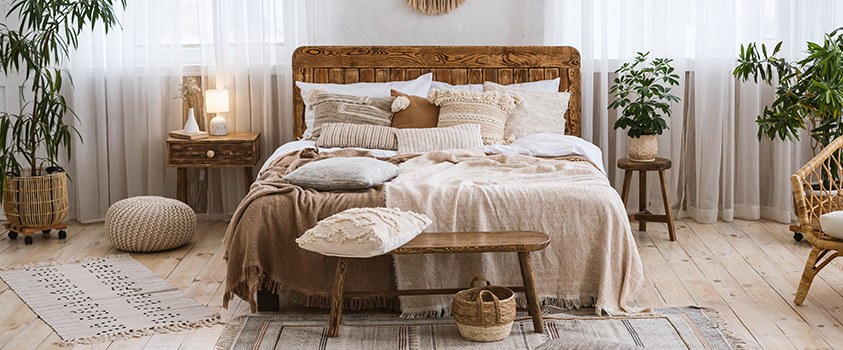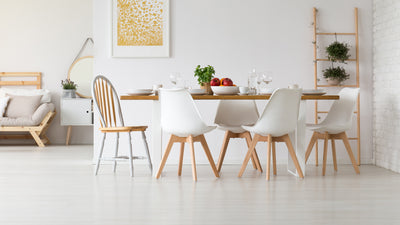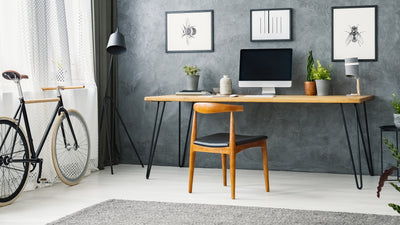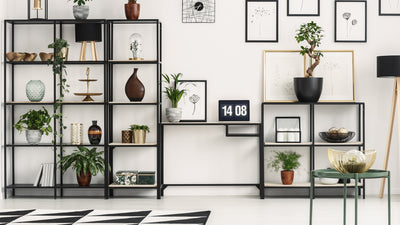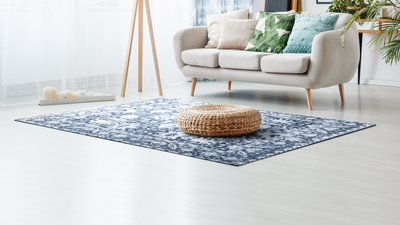11 Inexpensive Ways to Transform Your Bedroom For A Good Night's Sleep
Serene. Peaceful. Soothing. That’s how people want their bedroom to feel after a long day at work. You’ll get your best-ever rest and be more relaxed when your bedroom has a sleep-conducive environment. A good bedroom design promotes sleep and has the power to reduce stress and anxiety, maintain a positive mood, and make you feel comfortable. Just a few small touches here and there can create a better sleep environment.
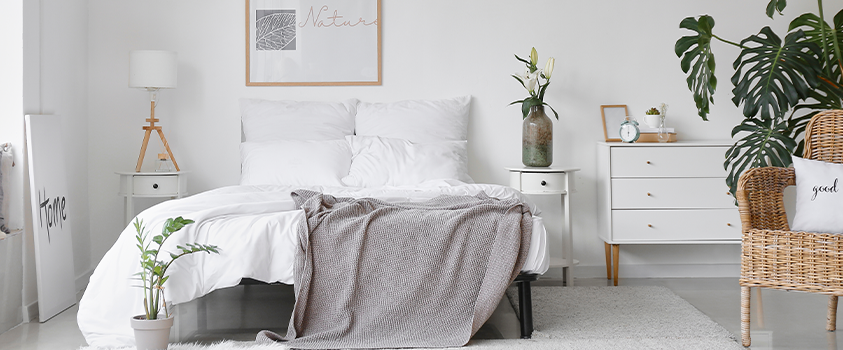
Wondering where to start? We’re here to help. We’ve talked to the sleep experts and uncovered their top tips to help you create a calming personal retreat for ultimate relaxation and a good night's sleep.
Start with a neutral palette
Different colours create different physical and emotional responses. The use of specific colours in a close environment may, to some extent, influence how fast you fall asleep and how well you sleep, so choosing the right colours for your bedroom is of utmost importance. It has been suggested that softer colours promote relaxation and better sleep, while bolder colours make you feel active and energised. It’s important to create a calming environment to achieve a deep, sound sleep. You don’t have to go through the hassle of a full paint job for a colour change - you can achieve a neutral colour palette with wall art, accent pillows or blankets, or simpy changing your bedsheets.
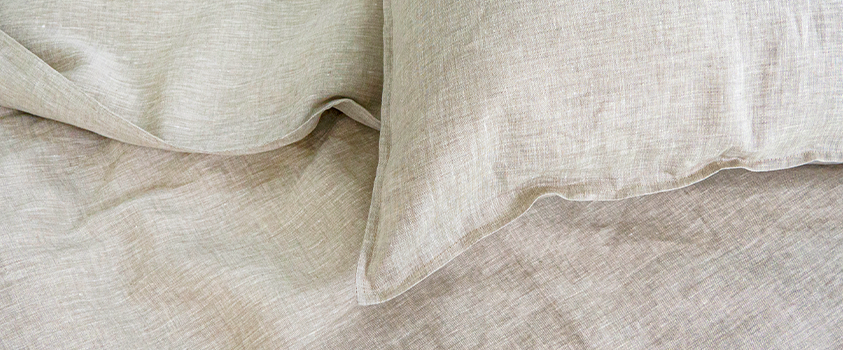
Layer your bed with cosy fabrics
Did you know that the ideal bedroom temperature for quality sleep is a cool 18.3 degrees Celcius (or 65 degrees Fahrenheit)? Your body temperature naturally drops before you go to sleep and during the night, and rises as you are about to wake in the early morning. If your core body temperature doesn't fluctuate within the natural sleep cycle, you might experience discomfort and insomnia.
In cold weather, one of the best ways to slip into dreamy sleep is by layering your bed with soft, cosy fabrics. One of our expert’s top tips is to not rely on a single, heavy blanket; instead, use multiple pieces to layer your bed for added comfort, cosy feel, and convenience. You may also want to invest in an electric blanket for those extra cold nights. Rather than spending money heating the whole house, you can snuggle under a single blanket and enjoy the warmth and energy savings.
In warm weather, switch out your bedding for lighter, more breathable fabrics. You can even find cooling blankets to help regulate your temperature so you can stay asleep at any temperature.

Use blackout curtains
Our body’s circadian rhythm is sensitive to light. According to the Centers for Disease Control and Prevention, the light and dark cycle of the sun has a powerful impact on our circadian clock and sleep. Our circadian clock responds to light by signaling our body to wake up and become alert like a natural alarm clock, whereas the dark room encourages our body to fall asleep. Keeping the light out of the room can help you fall and stay asleep. Blackout curtains are a perfect solution to keep your room dark. It helps to control your bedroom light levels by blocking sunlight, bright streetlights, and even external noise, prepping your room for you to get quality sleep. It also helps you to maintain the best temperature for sleep, as blackout curtains block UV rays that might heat your bedroom during the day. If you're a hot sleeper, you may find blackout curtains to be the perfect inexpensive cooling solution.
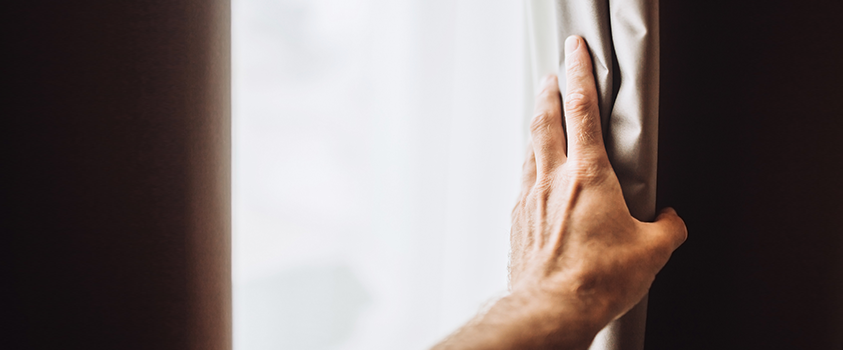
Block out LED light exposure
It's not just sunlight you need to worry about. Any artificial light exposure from electronic devices can ruin your sleep environment, disrupt circadian rhythms and negatively impact your ability to fall asleep. Watching TV, browsing on your smartphones, gaming on the computer, and general technology use has been shown to lead to later bedtimes in adolescents. When it comes to modern electronics, blue light exposure is particularly insidious, especially when we consider how many people (especially children) are likely to use electronic devices before bed.
Normally, we are exposed to blue light from the sun, which suppresses the natural release of melatonin and keeps us alert and awake. While it can be used therapeutically to treat sleep disorders, many of us are being exposed to it through our own unregulated device usage, which may lead to chronic sleep issues. Just a few minutes of screen time from a phone, an overhead fluorescent light, or even a charger is enough to disrupt a good night's restorative sleep. Luckily, an ideal sleep environment is just around the corner. Make it part of your routine to put away devices 2-3 hours before bed. Keep your sleeping area clear of handheld devices. Use masking tape or special dimming strips to cover flashing or standby lights. Dim your devices before bed or explore if they have a night mode. Finally, you can set your power sockets and devices on timers to keep your bedroom dark during prime sleeping times.
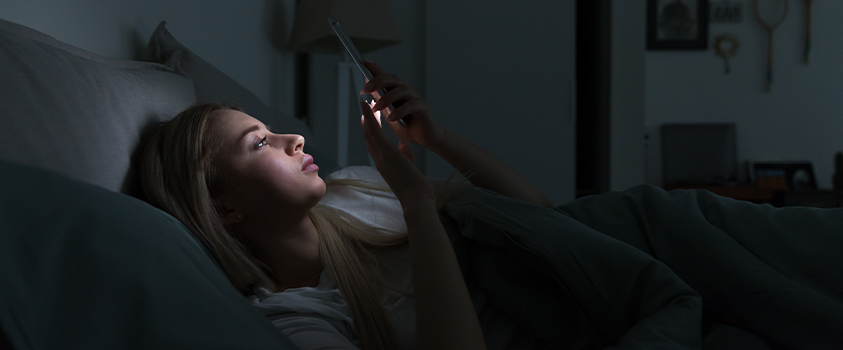
Get rid of clutter
One of the ways to sleep better is to cut the clutter in your bedroom. Keeping your sleep space clear is an important factor when it comes to getting quality sleep, as your brain will register the surrounding mess regardless of how used to it you are. This has long-term negative effects on your stress levels. We're not just talking about physical clutter: eliminating visual clutter, digital clutter, and mental clutter will help you maintain healthy sleep patterns and get high-quality rest. In a recent case study on The Healthy, Lauren Tingley shares her struggle with insomnia and how decluttering has helped her sleep well at night. Talk to family and friends, and you may hear many similar stories. Luckily, there are plenty of stylish bedroom storage solutions for any bedroom, such as this stylish fabric storage ottoman. For a clear path to decluttering your home, check out our blog Guide to Decluttering & Organising your Home.
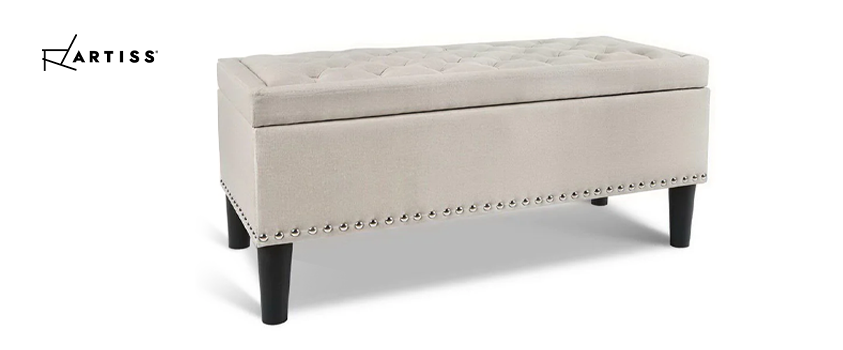
Add natural textures and plants
Creating a relaxing bedroom sanctuary promotes a sleep-positive environment. A bunch of flowers, a few houseplants, woven baskets and floor rugs are some of the ways to add natural textures and colours to your space. They help create a sense of calm, relieve visual tension and physical stress, increase productivity and promote better sleep. Some plant experts even claim that indoor plants will improve your air quality, though not as efficiently as an air purifier. With a few changes in your bedroom design, you can create a calming oasis to get away from the everyday hassles of life.
Fall asleep with aromatherapy
Aromatherapy involves using natural plant extracts from flowers, herbs, and other plants for physical and psychological well-being. A variety of essential oils have been used since ancient times, including lavender, sandalwood, and sweet orange. According to the Victorian Government Better Health Channel, different aromas produce different emotional and psychological reactions. Using essential oils in an aroma diffuser may help promote sleep and relieve insomnia, headaches, depression and anxiety.
Light your favourite candles
Many candle makers claim their products help with sleep. But do they live up to the label? Although candles can’t literally induce sleep, there are many positive effects to burning candles before bed. They lower your blood pressure, helping you relax and drift off sooner. A piece of expert advice is to use plant-based wax candles. However, make sure you do not leave the candle burning through the night while sleeping.
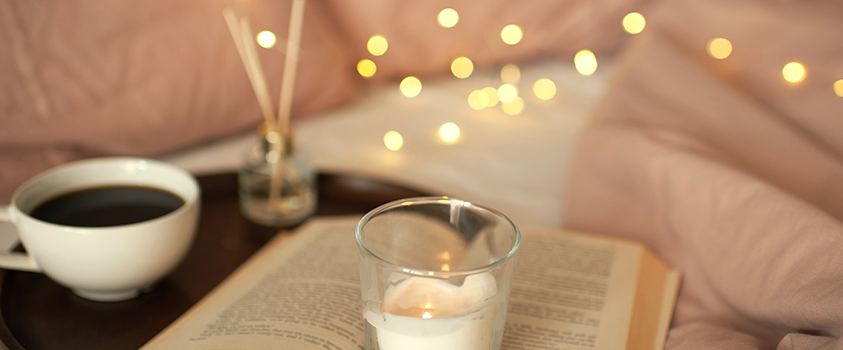
Play soft music or white noise
Listening to soft music at bedtime can help you fall asleep faster and improve your sleep quality. A study published in the Journal of the American Geriatrics Society has found that older adults who listened to music experienced better sleep quality as compared to those who didn’t listen to music. Calming music has a positive impact on sleep. It slows down your heart rate and breathing and lowers your blood pressure. This also helps in relieving stress and anxiety. Wind down with your favourite slow tracks or meditation reels and you’ll wake up feeling refreshed in no time.
Another option is to use a white noise machine. It may seem counterproductive to fall asleep in a noisy environment, but you'll be surprised by the studies. White noise refers to noise that contains all frequencies across the spectrum of audible sound. Allegedly, white noise may help improve sleep because it helps to mask background noise levels, reducing sleeper's sensitivity to disruptive noises such as a busy street. Luckily, you don't need to buy a white noise machine to experience the benefits: there are plenty of apps you can experiment with before considering a dedicated machine.
Check your mattress
When was the last time you checked your mattress? Do you have trouble finding the right sleeping position because of bumps and lumps? Do you feel back or neck pain when you wake up in the morning? Are you having a good night's rest, or are you tossing and turning all night? Is your mattress 6-8 years old? Then it might be time to get a new mattress. Of course, a comfortable mattress can come with a high price tag, but you can hold on to it a little while longer with a mattress topper. You can find toppers made from memory foam, latex or fibre filling in a variety of thicknesses for a restful sleep. Toppers aren't just good for extending the life of an old mattress - they can protect your new one by keeping it fresh, clean, and less worn down over time.
Build a better bedroom environment for good sleep
If you’re looking to buy quality bedroom furniture, you don’t need to count on sheep when you can count on Artiss. We’re focused on delivering comfortable and affordable bedding solutions to help you get undisturbed sleep. We offer a wide range of products from bed frames and heads to wardrobes and chests of drawers for your ideal bedroom. Prepare your bedroom for sleep and enjoy bedtime again when you're falling asleep with Artiss.
